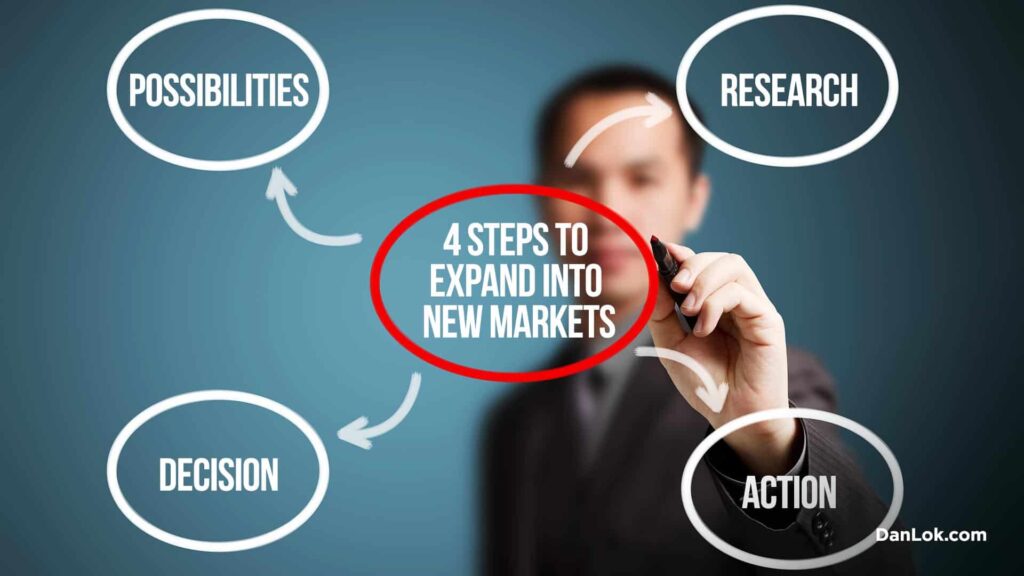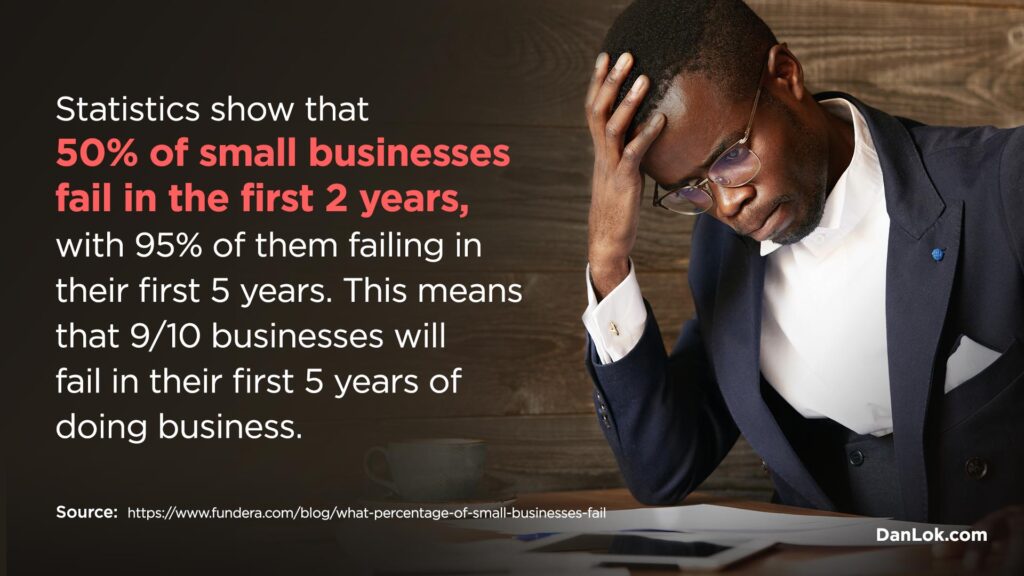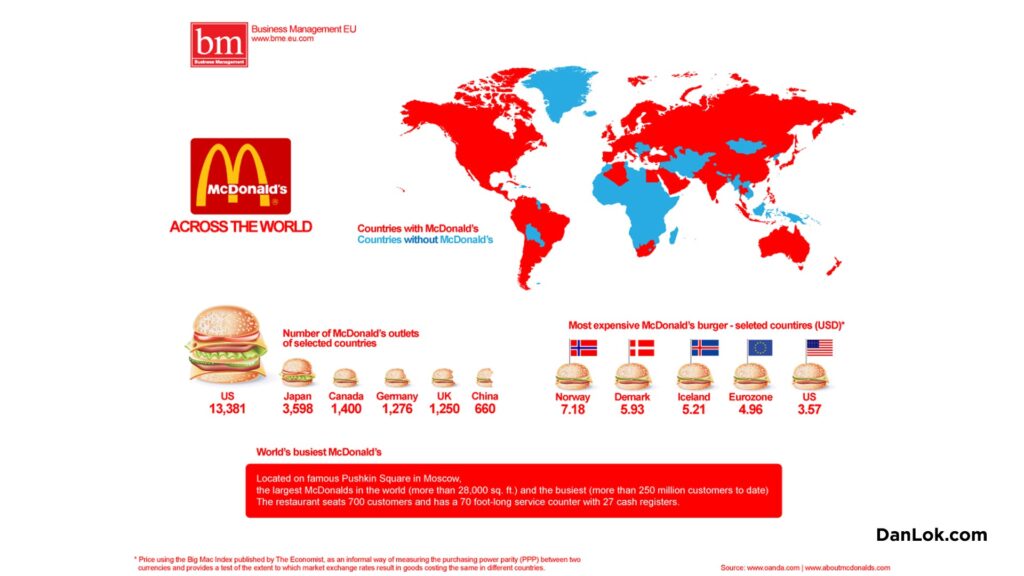Did you know that you could take your business to the next level if you find a joint venture partner? A joint venture is a mutually-beneficial partnership agreement between two or more individuals. In a joint venture, two or more parties will start a business together, collaborate on a project, or do business together. This type of partnership typically involves shared ownership and shared profits, as the joint venture partners will pool their resources, share the expenses, and share the risks.
If approached the right way, a joint venture can be a very smart business decision. In fact, businesses who are in competition with each other often join forces and start a joint venture. Entrepreneurs don’t always need to have the mentality that they should crush their competition. Why? Because many of you could actually profit from your competition by forming an alliance and collaborating on a joint venture.
You can profit from your competition if you pool your resources and start a successful joint venture. Share on XCompetitors often join up with each other if they lack certain resources or skills that their competitor has. For example, imagine that one business has a strong distribution capacity, which a similar business lacks. The other similar business, however, has a much stronger social media following and more connections to influencers. If they work together, they could both profit more than they would working alone.
A joint venture doesn’t have to be with a competitor, however. In general, joint ventures are wise to consider, as you can acquire valuable shared resources without the risk of excessive capital being required. In this article, we’ll go over a few examples of joint venture partnerships before we discuss the “dos” and “don’ts” to remember when approaching a possible joint venture partner.

Examples of Joint Venture Partnerships
Were you aware of the fact that the popular streaming application “HULU” was the result of a joint venture? NBC Universal Television Group (Comcast) and Disney ABC Television Group (The Walt Disney Company) joined forces to create “HULU”. It turned out to be a major success.
Doritos chips collaborated in a joint venture with Universal Pictures and Amblin Entertainment when the film Jurassic World: Fallen Kingdom was released. In a brilliant marketing collaboration, Doritos created the world’s largest Dorito (“dinosaur-sized”) and fans could bid in an auction to win it, or enter to win online. For equal media exposure for both partners, fans had to tweet #JurassicDoritos to be eligible to enter for a chance to win. The winning bid’s proceeds went to the American Red Cross to help those affected by volcanic disasters in Hawaii, where many scenes of Jurassic World were filmed. In this joint venture, specially marked bags of Doritos chips had the Jurassic World: Fallen Kingdom packaging which came with special codes to win prizes.
Those are just a couple of examples of big joint ventures that were very successful.
As far as small businesses go, there are many types of joint ventures. Two struggling small businesses could pool their resources in a joint venture and both make a nice profit from the venture. It’s crucial, however, to understand the “dos” and “don’ts” first.
The “Don’ts” When Approaching a Joint Venture Partner
If you’re thinking of approaching a possible joint venture partner with an idea, what should you avoid doing? There are certain things you should never do. Below is a list of “don’ts” to remember when you’re approaching a joint venture partner.
Don’t Approach Someone Prior To Establishing Your Relationship With Them
Never approach a possible joint venture partner prior to establishing a relationship with them. It’s not wise to suggest that someone do something for you (or with you) if you haven’t yet built a relationship with that person. Even if a joint venture could potentially make them a lot of money, you should still form a relationship with them before you approach them with your idea.
If this person doesn’t know you, why should they trust you, or do a deal with you? Why should they even read your email?
This is why you should never approach a joint venture partner with your idea on your first meeting, or upon first contact with them. You haven’t done anything yet to earn their trust or respect. You don’t yet deserve their attention or consideration.

For example, imagine that a public speaker who is a successful businessman gets approached by a random member of the audience after their presentation. Keep in mind, the speaker doesn’t know this audience member at all. The stranger asks them, “Would you be interested in a joint venture?”
The stranger may as well have said, “I know you don’t know me at all, but how about you just trust me and do a deal with me?”
That sounds ridiculous, right? Well it is ridiculous, as well as inappropriate.
An appropriate question the stranger could have instead asked, is “Could I possibly take you out for lunch?” The better approach is to start with lunch, and maybe even have a few lunches with them before bringing up your idea of a joint venture. Build the relationship first, and earn their trust. Be patient, and propose the joint venture when the time is right.

Don’t Overshare Details of How the Partnership Benefits You
When you’re discussing a possible joint venture with someone, don’t overshare details regarding how the partnership will benefit you.
It’s better to focus the conversation on the mutual benefits of the joint venture.
If you speak too much about the personal benefits for you, it’s possible your potential joint venture partner will feel used, or be turned off from doing the deal.
Don’t Approach Them With a Distrusting Attitude
Never approach a possible joint venture partner with a negative or distrusting attitude. This type of attitude is an instant repellent, as nobody wants to do business or collaborate with someone negative. And, people are more likely to trust someone that gives them their trust. So if you don’t seem to be very trusting, they probably won’t trust you, either.
Don’t Expect an Immediate Answer
Let’s say you’ve met with your potential joint venture partner a few times, and during your last meeting, you finally approached them with your partnership idea. It’s important that you don’t expect an immediate answer.
If you follow up with them a mere 24 hours later, asking them if they’ve made a decision, this will only turn them off and make them not want to partner with you.

It’s best to give them space, and allow them some time to think it over. It’s inappropriate to rush them, as it’s in bad form to expect or demand an immediate answer.
After approaching a possible joint venture partner with a proposal, you should not follow up for at least one week. Even if you don’t hear from them after a couple of days, don’t get tempted to reach out. If you don’t hear from them for one week, at that point it’s reasonable to reach out to them.
This requires patience, but that patience is the respectful and professional way to go about this.
The “Dos” When Approaching a Joint Venture Partner
Now that you know what not to do when approaching a possible partner, what are some things you should do? When you’re considering a joint venture, there are some things you should remember to do, to ensure your venture is successful. Below is a list of “dos” to keep in mind when you’re approaching a possible joint venture partner.
Do Your Research
It’s crucial to do your research before approaching someone about a joint venture, for many reasons. For one thing, your research will help you figure out where their business is falling short, and how a partnership with you could benefit them. Since a joint venture should be mutually beneficial, you’ll have to figure out which assets you bring to the table that they don’t currently have.
Research also helps ensure you’re prepared for your meeting with them. The goal is to impress them, and earn their trust. Being familiar with them and their company helps you accomplish this goal.
Get Their Attention Before You Approach Them
Have a possible joint venture partner in mind? Target acquired? A clever approach is to get their attention before you approach them. You can do this in many different ways. For example, you could become their client, first, or attend a few of their workshops. If you’ve been buying tickets to attend their seminars or workshops, they’ll respect this. This strategy is also a great way to build the relationship, which as you recall, you must do before you approach them with a joint venture proposal.

You can also get their attention by showing them that you’re a fan, by buying their product, taking a photo with it, and posting a positive review online. Imagine the person you want to partner with has an upcoming book signing for their new book. You can buy their book, get a photo with their product, post the photo on social media, and tag them. Now, you’ll have their attention, and you won’t be a complete stranger in their eyes.
Approach Someone With Complementary Resources
A strategic approach includes approaching someone with complementary resources to yours. The parties involved in a joint venture ideally should have complementary resources.
Resources can range from services, skills, and products to business assets, social media followers and customer lists. All of these resources can be leveraged to reduce costs.
As long as you trust each other and you have an appropriate contract drawn up, you’ll feel comfortable sharing these resources with each other. Do you have access to certain valuable resources that your potential partner doesn’t have, and vice versa? If so, pooling your resources cuts costs and increases the likelihood that your venture will be successful.
Complementary resources are resources that enhance each other, and are stronger together than they are apart.

Choose Someone You Connect Well With
It’s important to choose a potential joint venture partner carefully. Choose someone you vibe well with, who has similar core values. It’s best if your joint venture partner is someone you get along with, so it’s important that the two of you have compatible personalities.
You’ll want to choose someone you vibe well with and connect with. When you go out for lunch, do you smile, laugh, and get along well? Do you listen to each other? Some people aren’t compatible with each other, and that’s another reason it’s so important to build a relationship with them prior to pitching them. You need to see if you work well together.

Build Rapport and Earn Their Trust
The most ideal scenario is that your possible joint venture partner trusts you before you approach them with your proposal. Their business and their reputation matters to them, so they can’t risk their business or reputation on someone they don’t know and don’t trust.
Earning their trust is especially important if sharing valuable resources is required for the joint venture. For example, if sharing customer lists is required, trust is pertinent, since a customer list is the most valuable asset a business has.
Interact With Them on Social Media
While you’re building a relationship with your potential joint venture partner, you should try to regularly engage with them on social media. The key is to interact with them on social media often enough to maintain your relationship, but not so frequently that you look like a stalker.
This means that perhaps every couple of days, you’ll like and comment on one of their social media posts. You’ll regularly comment something supportive and positive, while you build your relationship with them. This will help your possible joint venture partner feel more familiar with you, and more comfortable with you.
Leverage Your Most Valuable Assets
Earlier, we mentioned how a customer list is the most valuable asset a business has, but there are many other valuable assets you can leverage to entice a possible joint venture partner.
If you’ve done your research, you’ll know which assets they don’t have, and which resources are lacking. If you have assets or resources that they can benefit from, make sure to leverage those assets to make your proposal more enticing.

Personalize Your Pitch
When it’s time to propose a joint venture, you should always personalize your pitch. Perhaps you’re pitching your joint venture proposal via email, after a few lunches and dinners and after establishing a relationship with them. Or, perhaps you’re pitching in person, once you feel you’ve earned their trust and have a good rapport going.
If you customize your pitch to suit the person you're pitching, you'll have a better chance of closing them. Share on XWhether you’re pitching via email or in person, always personalize your approach. In emails, keep it personal. Do not use a template. Template emails that are clearly copy-and-pasted with a name switched out, will not work, as it will be obvious it’s a template email. It’s better to write a personalized email, as it demonstrates effort, thought, and care. In person, your pitch will be better if you incorporate personal details about them and their business into your pitch.
If you customize your pitch to the person you’re pitching to, you have a better chance of closing the deal.
Ask For References or Testimonials
Remember that you’re not the only one trying to impress your possible joint venture partner. They should be able to impress you, as well, and make you feel comfortable about the idea of working together. In other words, they need to earn your trust as well. It goes both ways.
So, don’t neglect to ask them for references or testimonials before you sign any sort of agreement with them.
Set Expectations
When a joint venture is being discussed, before contracts are signed, you should set expectations with each other. This includes the investment required (the expense) and the potential upside (the return), as well as the potential downside (the risk).
It’s possible that compromises will need to be made, before both parties feel comfortable signing a deal. It’s best to get this part of the process over with before the venture begins, to avoid running into misunderstandings or problems later on.

Who Should You Do a Joint Venture With?
At this point, you’ve learned what you should and shouldn’t do when approaching a possible joint venture partner. You’ve probably also gained some insight as to what type of person you should partner with.
To summarize, you should partner with someone who has complementary resources and has assets they bring to the table that you’re lacking. You should also make sure to partner with someone you’re compatible with, and get along well with. Always partner with someone you trust, and remember to do your research on this person and check their references.
You now know what type of partner is ideal, but what if you lack the connections to meet a potential joint venture partner? What if you want to find someone to collaborate with, but you don’t know how to meet them?
Need Help Finding The Right Joint Venture Partner?
Do you need help meeting a potential joint venture partner? And do you need trusted and strategic advisers to help you figure out the best way to approach a joint venture partnership? Perhaps you’re ready to take your business to the next level, and you know a joint venture will help you succeed, but you lack the connections to find the right partner.
Dan Lok has now formed the world’s most exclusive advisory board for ambitious and distinguished entrepreneurs who are committed to reaching next-level success.
Dragon 100™ is an exclusive group of 100 A-players who are serious about their success. If you’re accepted as a member of Dragon 100™, you will get a rare opportunity to network with other elite entrepreneurs and learn from Dan Lok himself. This is a great way to network with other A-players who could potentially be your next joint venture partner.
If you’re ready to take your business to the next level and join an elite group of A-players, click here to apply to be a Dragon 100™ member.




































